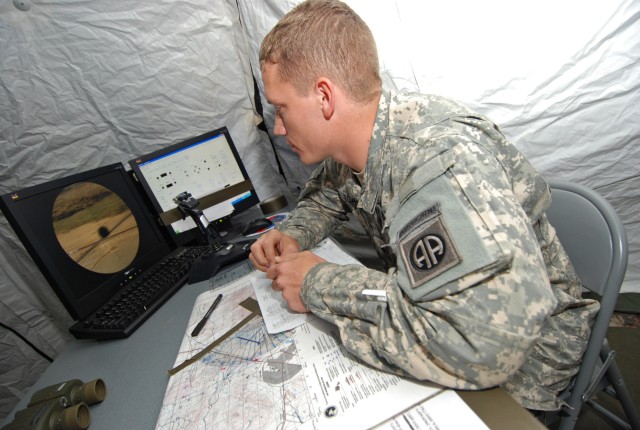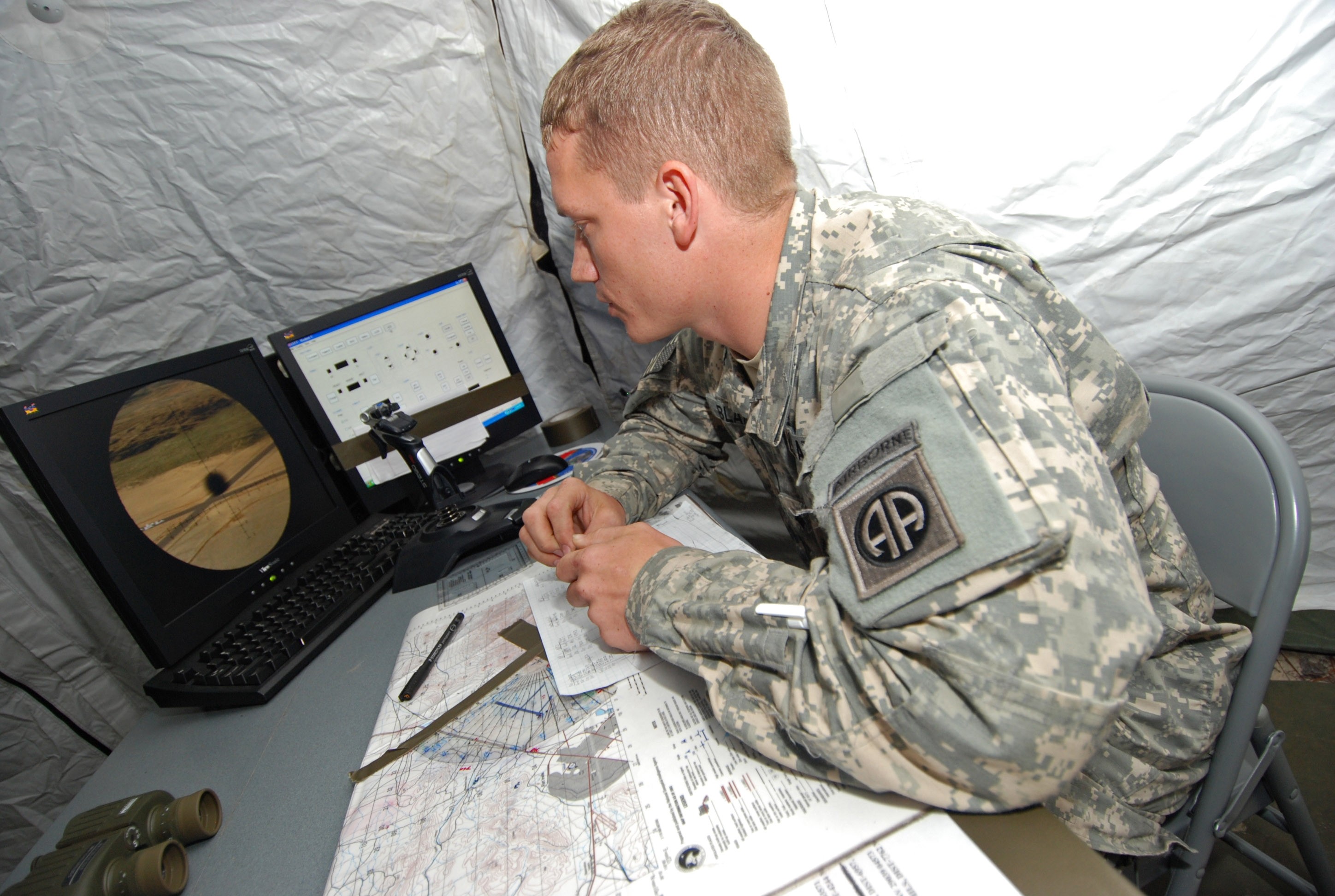FORT BRAGG, N.C. - Spc. Zach Lafler spots the tank as it comes rumbling into view near an old landing strip at the foot of the mountains. From his observation point several kilometers away, Lafler makes a few rapid calculations and calls in a fire mission.
Only minutes later, the tank is nothing but a pile of twisted metal spewing thick black smoke into the mountain air.
For Lafler, it's a textbook example of a successful fire mission - except for the fact that the tank only existed on a computer screen and the action wasn't occurring in Iraq or Afghanistan, but in a small tent in the Fort Bragg woods.
Thanks to a portable, high-tech simulator known as the joint call for fire trainer, Lafler and other fire support specialists with the 82nd Airborne Division's 2nd Brigade Combat Team can now train and maintain their observer skills without dropping a single live round.
Observers and fire support officers from the 2nd BCT practiced on the call for fire trainer during their two-week fire support team certification exercise in September.
Certification is a semi-annual requirement for FOs and FSOs. The process requires them to demonstrate mastery of half a dozen critical job-related skills, including land navigation, radio communications and crater analysis.
One of the key tasks is to be able to call in fire missions on the call for fire trainer.
"If I could have my Soldiers pull away one thing from this training, it would be the ability to call in air support, which is a part of the call for fire training," said 2nd Lt. Lawrence Phelps, an FSO with Troop B, 1st Squadron, 73rd Cavalry Regiment.
"It's sort of the meat and potatoes (of our job)," added 2nd Lt. Robert Zargan, an FSO with 1st Battalion, 325th Airborne Infantry Regiment, 2nd BCT.
The joint call for fire trainer looks somewhat like a video game system attached to a huge, flat-screen TV.
The system has a database of different scenarios and landscapes it can call up which are projected on the screen in strikingly, life-like detail.
Based on the scenario and the terrain, the FO will then be able to call in fire missions ranging from artillery to attack aviation to naval gunfire.
"It's a very good tool," said 1st Lt. Matt Geib, an FSO with 1st Bn., 325th AIR. "The simulators that the Army has have come a long way and this new system is worlds above some of the other systems we use to have."
Phelps cautioned that there is no substitute for firing actual rounds, but said resourcing and safety issues often make it difficult to conduct live fire training. Considering those limitations, the call for fire trainer is the next best thing, he said.
"This is the best tool we have to replicate real life situations," he said.


Social Sharing